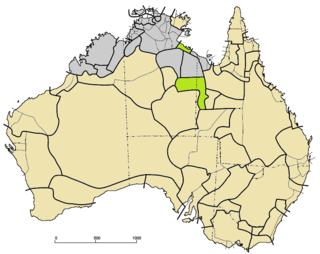
Altaic is a controversial proposed language family that would include the Turkic, Mongolic and Tungusic language families and possibly also the Japonic and Koreanic languages. The hypothetical language family has long been rejected by most comparative linguists, although it continues to be supported by a small but stable scholarly minority. Speakers of the constituent languages are currently scattered over most of Asia north of 35° N and in some eastern parts of Europe, extending in longitude from Turkey to Japan. The group is named after the Altai mountain range in the center of Asia.

The Austronesian languages are a language family widely spoken throughout Maritime Southeast Asia, Malay Peninsula, parts of Mainland Southeast Asia, Madagascar, the islands of the Pacific Ocean and Taiwan. There are also a number of speakers in continental Asia. They are spoken by about 386 million people. This makes it the fifth-largest language family by number of speakers. Major Austronesian languages include Malay, Javanese, Sundanese, Tagalog (Filipino), Malagasy and Cebuano. According to some estimates, the family contains 1,257 languages, which is the second most of any language family.
Glottochronology is the part of lexicostatistics which involves comparative linguistics and deals with the chronological relationship between languages.

Morris Swadesh was an American linguist who specialized in comparative and historical linguistics.

The Pama–Nyungan languages are the most widespread family of Australian Aboriginal languages, containing 306 out of 400 Aboriginal languages in Australia. The name "Pama–Nyungan" is a merism: it is derived from the two end-points of the range, the Pama languages of northeast Australia and the Nyungan languages of southwest Australia.
Comparative linguistics is a branch of historical linguistics that is concerned with comparing languages to establish their historical relatedness.

Uto-Aztecan, Uto-Aztekan or Uto-Nahuatl is a family of indigenous languages of the Americas, consisting of over thirty languages. Uto-Aztecan languages are found almost entirely in the Western United States and Mexico. The name of the language family was created to show that it includes both the Ute language of Utah and the Nahuan languages of Mexico.
The Swadesh list is a classic compilation of tentatively universal concepts for the purposes of lexicostatistics. Translations of the Swadesh list into a set of languages allow researchers to quantify the interrelatedness of those languages. The Swadesh list is named after linguist Morris Swadesh. It is used in lexicostatistics and glottochronology. Because there are several different lists, some authors also refer to "Swadesh lists".
Joseph Bernard Kruskal, Jr. was an American mathematician, statistician, computer scientist and psychometrician.

Macro-Pama-Nyungan is an umbrella term used to refer to a proposed Indigenous Australian language family. It was coined by the Australian linguist Nicholas Evans in his 1996 book Archaeology and linguistics: Aboriginal Australia in global perspective, co-authored by Patrick McConvell. The term arose from Evans' theory suggesting that two of the largest Indigenous Australian language families share a common origin, and should therefore be classified as a singular language family under "Macro-Pama-Nyungan".

The Daly languages are an areal group of four to five language families of Indigenous Australian languages. They are spoken within the vicinity of the Daly River in the Northern Territory.

The Malayic languages are a branch of the Malayo-Polynesian subgroup of the Austronesian language family. The most prominent member is Malay, which is the national language of Brunei, Singapore and Malaysia, and is the basis for Indonesian, the national language of Indonesia. The Malayic branch also includes the local languages spoken by Indonesians and ethnic Malays, further several languages spoken by various other ethnic groups of Sumatra, Indonesia and Borneo. The most probable candidate for the urheimat of the Malayic languages is western Borneo.
Quantitative comparative linguistics is the use of quantitative analysis as applied to comparative linguistics. Examples include the statistical fields of lexicostatistics and glottochronology, and the borrowing of phylogenetics from biology.

The Ngarna or Warluwar(r)ic languages are a discontinuous primary branch of the Pama–Nyungan language family of Australia. The moribund Yanyuwa language is the only survivor of this group.
Isidore Dyen was an American linguist, Professor Emeritus of Malayo-Polynesian and Comparative Linguistics at Yale University. He was one of the foremost scholars in the field of Austronesian linguistics, publishing extensively on the reconstruction of Proto-Austronesian phonology and on subgrouping within the language family, the latter principally by means of lexicostatistics.

The Southern Daly languages are a proposed family of two distantly related Australian aboriginal languages. They are:

The Macro-Gunwinyguan languages, also called Arnhem or Gunwinyguan, are a family of Australian Aboriginal languages spoken across eastern Arnhem Land in northern Australia. Their relationship has been demonstrated through shared morphology in their verbal inflections.
The Proto-Philippine language is a reconstructed ancestral proto-language of the Philippine languages, a proposed subgroup of the Austronesian languages which includes all languages within the Philippines as well as those within the northern portions of Sulawesi in Indonesia. Proto-Philippine is not directly attested to in any written work, but linguistic reconstruction by the comparative method has found regular similarities among languages that cannot be explained by coincidence or word-borrowing.
Proto-Pama–Nyungan is the hypothetical common ancestor of the Pama–Nyungan languages. It may have been spoken as recently as about 5,000 years ago, much more recently than the 40,000 to 60,000 years Aboriginal Australians are believed to have been inhabiting Australia.
The Takelma–Kalapuyan languages are a proposed small language family that comprises the Kalapuyan languages and Takelma, which were formerly spoken in the Willamette Valley and the Rogue Valley in Oregon.








